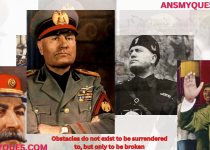WHAT IS PROSE? TYPES OF PROSE, FICTION, NON-FICTION
WHAT IS PROSE ??
The term ‘prose’ is derived from the Latin word “prorsus”, which means ‘straight on’, ‘continuous’ or “forward”. It is, consequently, a piece of writing which goes straight on and continues to the very end. The prose genre of literature is distinguished by its use of a greater amount of words and sentence structures, greater variety of rhythm as well as its closeness to the patterns of ordinary speech. Generally, prose is made up of fictive and non-fictive works
Types of Prose:
There are two types of prose namely The Non-Fictive and the fictive, fictive, from the word fiction means that such idea or what has been put together was fabricated and daydream rather than being real, the non-fictive stresses more on true life event and situations. Without futher ado let’s look at each categories and see what falls under it.
The fictive category
1. The Biography
What is Biography??
Biography refers to the non-fictive presentation of the life history of a person in which some effort is made to interpret facts relating to the person’s experience(s) in order to render a unified view in respect of the character, mind, attitude, and personality of the subject in question. Examples include Chief Sam Mbakwe: A Great Son of Achievement and Courage (1991), authored by Okechukwu Okebedi; Chinua Achebe: A Biography (1991), written by Ezenwa-Obacto; Awo As a Philosopher (2005), written by Moses Akinmakinde; and Biko (1979), authored by Omald Woods.
2. The Autobiography
WHAT IS AUTOBIOGRAPHY??
This is also a non-fictive prose. It is the story of someone’s life by the person who lived it. Because the autobiography is written while the subject is still alive, it is not possible to cover all the person’s life. Examples are Wole Soyinka’s The Man Died (1972) or his Ake: Years of Childhood (1981), Barrack Obama’s Audacity of Hope, Goodluck Jonathan’s My Transition Hours (2015), Maya Angelou’s Mom & Me & Mom (2013).
3. The Memoir
WHAT IS MEMOIR??
Another non-fictive prose genre is the memoir. Very close to the autobiography, it is different from it in the sense that the memoir is often the recollections of important people who have been part of a major event or have observed it more or less as participants. It is also believed that the memoir covers a particular timeframe in the writer’s life, making it more compact than the autobiography. Examples are Olusegun Obasanjo’s My Command (1980), a personal recollection of his war-time activities as a garrison commander, General Odumegwu Ojukwu’s deputy during the Nigerian civil war, Phillip Effiong’s Nigeria and Biafra: My Story (2004), Toyin Falola: A Mouth Sweeter Than Salt (2004), Toyin Falola: Counting the Tiger’s Teeth (2014), and Chinua Achebe: There Was a Country: A Personal History of Biafra (2012).
4. The Letter
WHAT IS A LETTER??
This refers to correspondences between persons of note and or a person and institutions. Oftentimes, letters of this type are used in non-fiction to reconstruct the past, access the essence of certain events and relationships such as love or hate, or may be used fictively, as in the epistolary novel, to advance the plot of the story. Almost all important nineteenth century and twentieth century European and American writers had letters which were often published after their death. Letters as a medium of fiction can be found in So Long a Letter (1982) by Mariama Ba, and Isidore Okpewho’s Tides (1993), and Dear Daughter by David Maillu (1976), etc.
5. The Essay
WHAT IS AN ESSAY??
The essay is a short prose composition which makes it possible for a writer (called the “essayist”) to express himself/herself on a singular unified subject or issue. The most popular of literary essays are Alexander Pope’s “An Essay on Criticism” (1771), “An Essay on Man” (1733), though written in verse, rather than in prose and T.S. Eliot’s “Tradition and the Individual Talent” (1919). Popular essays in prose by modern Africans include Julius Nyerere’s “Ujama”: The Basis of African Socialism” (1968), Alan Paton’s “Hate in the Beloved Country” (1976), and Chinua Achebe’s “The Education of a British Protected Child” (2009).)
6. The Journal
WHAT IS JOURNAL ??
A ‘journal’, as it is known today, refers to an occasional publication on current research findings, or news in a particular area of study. This is usually run by university departments and faculties in which writings related to what academics in those departments and faculties have recently found out in their various research efforts are published. Examples are Abia Journal of Humanities and Social Science published by Abia State University, Uturu, or Ibadan Journal of Humanistic Studies by the University of Ibadan. However, in literary studies, which is our concern here, a journal is an aspect of autobiographical writing which is different from the letter because it is a record of day-to-day accounts of a person’s activities, as well as his/her impressions about them. A notable journal is the Grasmere Journals (1800-1802) of Dorothy Wordsworth, William Wordsworth’s younger sister who kept detailed information on the development of a literary age known as Romanticism, one of whose initiators was her brother, William.
7. Criticism
WHAT IS CRITICISM??
This is also a non-fictive genre of prose. It is similar to the essay except that a piece of criticism may evaluate and pass judgment on literary works in an objective manner. An example is 21st Century Nigerian Literature: An Introductory Text (2009) by Onukaogu and Onyerionwu. Another example is T.S. Eliot’s The Sacred Wood Essays on Poetry and Criticism (1920).
The Fictive Category
1. The Short Story
WHAT ARE SHORT STORIES??
It is a small world of the novel. The novel will normally have many characters but a short story has just a few characters whose actions centre around a single event and
would still enjoy a sense of completeness. Examples are Ngugi wa Thiongo’s ‘The Return’ in his short story collection, Secret Lives (1975) and Nwachukwu-Agbada’s ‘The Small Dirty Pillow’ found in his Love Strokes and Other Stories (1997), “The Thing around Your Neck by Chimamanda Adichie, and ‘Say You Are one of Them’ by Uwem Akpan. The general word count for short stories is usually pegged at 7500-10000
words.
2. Novella
WHAT IS NOVELLA AND EXAMPLE OF NOVELLA??
The novella is neither a full novel nor a short story. It is longer than a short story but shorter than a novel. It is usually between 20,000 words to 50,000. Examples are The Secret Sharer (1917) and Heart of Darkness (1902) by Joseph Conrad.
3. Novel
WHAT IS NOVEL? EXAMPLES OF NOVELS
The novel is a long fictive work peopled by imaginary characters in which events are artistically presented in a continous piece of writing as if they actually took place. Novels contain at least thirty five thousand words. Examples are The Stillborn (1984) by Zaynab Alkali and Femi Ademiluyi’s The New Man (1994).
Owing to the length and infinite word count, it is usually elaborate in terms of technique and plot. Examples: Americanah by Chimamanda Adichie (2013) and The House My Father Built by Adewale Maja-Pearce (2014).
4. Fable
WHAT IS FABLE?? EXAMPLES OF FABLE
It is a narrative which possesses the twin attributes of straight and surface meaning (denotation), and deeper metaphorical meaning (connotation). It is keen to point out a moral truth in a civilized, inoffensive manner. Characters in fables are usually animals which are meant to talk and dialogue among themselves as if they were human beings. Examples are George Orwell’s Animals Farm (1945) and Tess Onwueme’s The Desert Encroaches (1985).
5. Allegory
WHAT IS ALLEGORY?? EXAMPLES OF ALLEGORICAL PROSE-FICTION
An allegory and a fable share a common border except that while a fable is often peopled by animal characters, the allegory is filled with figures which represent such ideas as malice, faithfulness, cruelty, envy, despair, contentment, pride, love, etc. An easy example is Pilgrim’s Progress (1678) by John Bunyan. Allegory is also a convention of prose fiction. The characters and the events depicted in the work represent certain qualities or ideas related to different spheres of human activity like politics, religion and morality. Another classic example is Everyman, whose authorship is unknown.
6. Romance
WHAT IS ROMANCE? EXAMPLE OF ROMANCE PROSE FICTION
Romance’ in literature has no real connection with the modern-day use of the word to depict a love or amorous relationship between a man and a woman. The term in literature refers to a fanciful tale whose setting, characters, incidents, etc, are out of this world, as it is said in popular parlance. Characters perform actions which are ordinarily impossible to achieve by human beings. A typical romance shocks or delights its readers for purposes largely of entertainment. An example of romance is Sir Gawain and the Green Knight published in the 14th century by King Arthur. Those who question Amos Tutuola’s The Palm-wine Drinkard (1952) as a novel claim that its features accord well with the romance tradition of writing. Romance is closely related to an epic but differs from it in the use of the same features in a less advanced form.
7. Parable
WHAT IS PARABLE? EXAMPLES OF PARABLE
This is quite close to a fable except that it is shorter. A parable is meant to be used to depict a moral truth or lesson. The Christian Bible has many examples of parables. Examples include “The Good Samaritan”, “The Sower”, “The Prodigal Son”, etc. Modern parables include the African short stories, “Parable of the Eagle” (1929) by James E.K. Aggrey and “The Man who Shared His Hut” (1962) by Jomo Kenyatta.
8. Faction
WHAT IS FACTION ?? EXAMPLES OF FACTION IN PROSE FICTION
This is a rather curious and emerging prose genre in which both “fact’ and ‘fiction’ are merged in the same story. Examples are Kole Omotoso’s Just Before Dawn (1988) and John Munonye’s A Kind of Fool (1999). In other words, a piece of faction’ is neither entirely fiction nor entirely factual.
9. Bildungsroman
WHAT IS BILDUNGSROMAN?? EXAMPLES OF BILDUNGSROMAN
It is a novel that dwells on the growth, experience and development from childhood to maturity or from innocence to experience of the major character. Chimamanda Adichie’s Purple Hibiscus and Charles Dickens’s David Copperfield (1849) are good examples.
10. Historical Novel
WHAT IS HISTORICAL NOVEL?? EXAMPLES OF HISTORICAL NOVELS
This is a novel that makes use of real historical event(s) in its plot development. In this novel, real historical personages in such events are retained or replaced by fictional characters. The spatial and temporal settings may also be retained or partially or fully fictionalized. Some examples are Charles Dickens’s A Tale of Two Cities and Yaa Gyasi’s Homegoing (2016).
11. Gothic Novel
WHAT IS GOTHIC NOVEL?? EXAMPLE OF GOTHIC NOVEL
This is a novel dominated by elements of terror, horror and the supernatural, which engender fear in all, age notwithstanding. The horror film is a good example of its electronic form. Examples: The Strange Case of Dr. Jekyll and Mr. Hyde by Robert Stevenson (1886), The Castle of Otranto by Horace Walpole (1765) and Frankenstein by Mary Shelley (1823).
12. Meta-Fiction
WHAT IS META-FICTION
It is a fiction or novel that explores the processes of novel writing itself, a fiction about fiction. A recent example is Barbara Adair’s End


